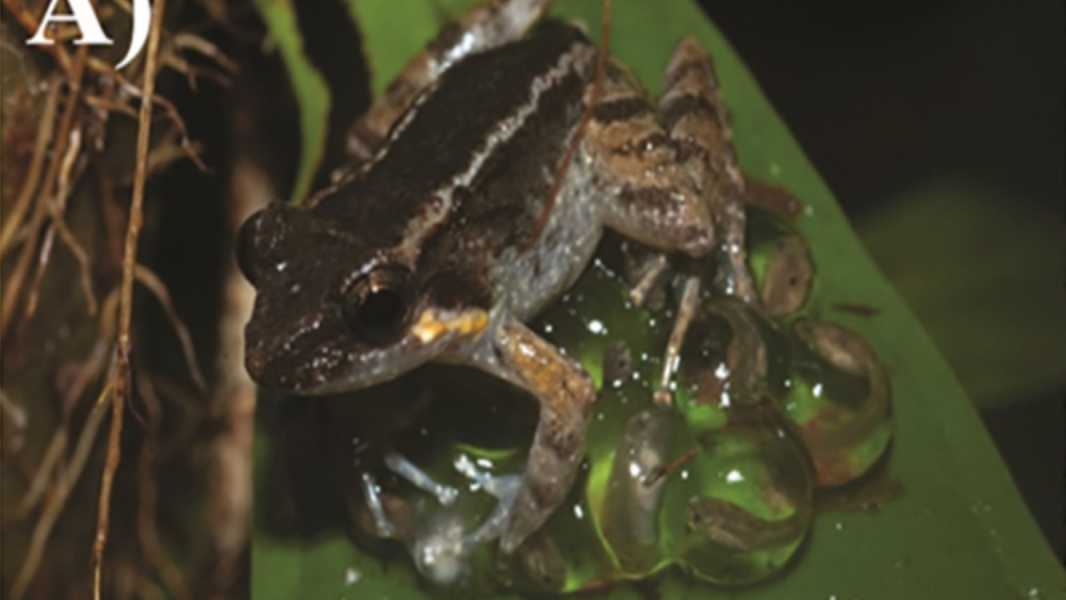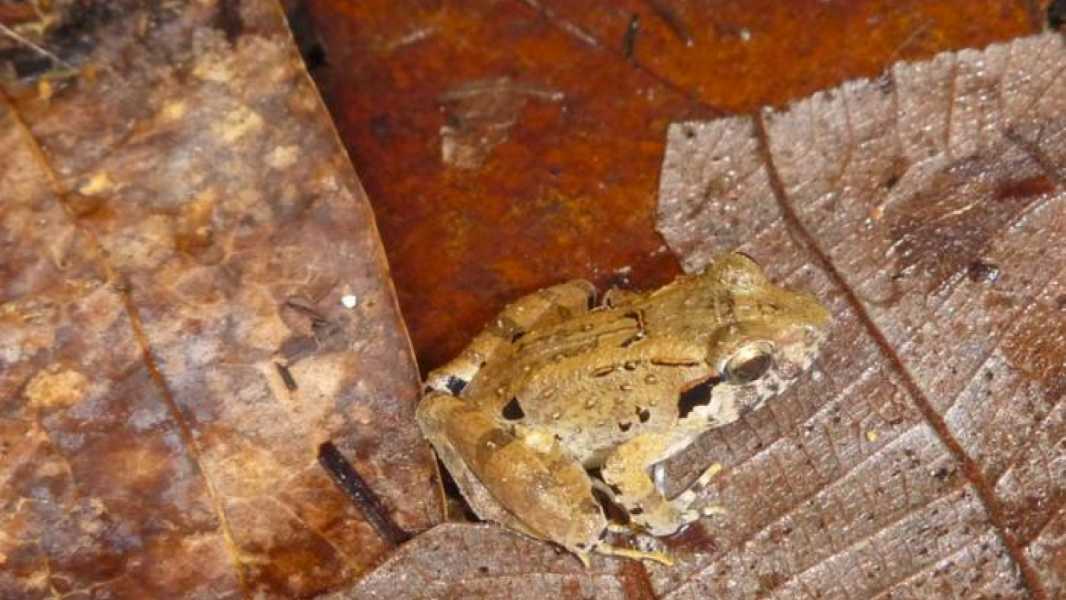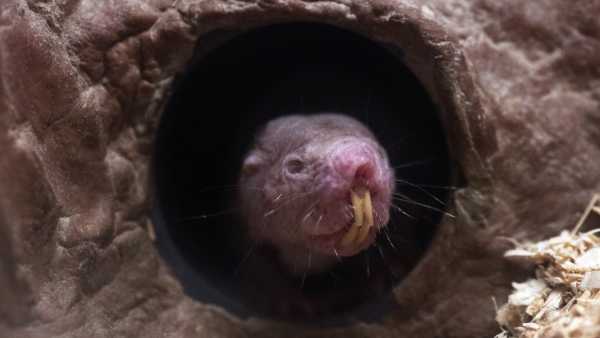
A fanged frog, Limnonectes phyllofolia, cares for its eggs. (Photo credit: 2023 Frederick et al)
A research team has discovered a tiny new species of frog, no bigger than a quarter. But don't let its small size fool you: It has fangs.
The new species, Limnonectes phyllofolia, described by scientists in a recent study published December 20 in the journal PLOS One, was found in the dense forests of Sulawesi, an Indonesian island known for its rich biodiversity, including fanged frogs.
These frogs use their teeth as weapons to fight off rivals for territory suitable for laying eggs. Researchers speculate that the frogs may also use their fangs to rip apart the protective shells of their prey, such as insects and crabs. (Technically, the saber-like structures found on the frogs' lower jaws are bony projections, not true teeth.)
It may come as a surprise that some frogs have teeth. Indeed, many species of frogs have tiny teeth lining their upper jaws – although in most, they’re barely noticeable. However, the more than 70 species in the genus Limnonectes are known for their more prominent fang-like projections on their lower jaws. These fanged amphibians are found throughout East and Southeast Asia, with the dense rainforests of Sulawesi home to 15 species. Some of the frogs in this genus are quite large, such as Blyth’s river frog (Limnonectes blythii), which can weigh more than 2.2 pounds (1 kilogram). However, the newest member of the genus, L. phyllofolia, only reaches a length of 1.2 inches (3 centimeters), making it the smallest fanged frog on the planet.
But its tiny size isn’t the only unusual characteristic of this frog. Researchers first noticed the new species when they observed strange nesting behavior in the rainforests of Sulawesi. They found unmistakable clusters of frog eggs scattered across mossy boulders, fern fronds, and saplings, which surprised them because most frogs prefer to lay their vulnerable eggs on the banks of rivers and ponds to prevent the gelatinous sacs that surround the developing tadpoles from drying out.

Researchers first noticed the new species when they noticed strange nesting behavior in the rainforests of Sulawesi.
Moreover, when the scientists wandered around the area trying to figure out what kind of animal was making these above-ground nests, they noticed that all the tiny frogs returning to their eggs
Sourse: www.livescience.com





